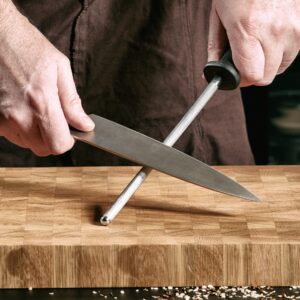Do you know which knife to use?
Knives are an essential kitchen tool and are a worthy investment for any cook. Knife blades can be made of different metals with benefits and drawbacks. Carbon steel blades are easily sharpened due to their soft consistency but tend to discolor over time. A stainless steel blade is incredibly durable and won’t rust, corrode or discolor; however, it’s more difficult to sharpen. The most commonly used metal is high-carbon stainless steel, which resists corrosion and sharpens easily.

Here are the essential knives for any kitchen:
French Knife
This kitchen workhorse does everything from mincing garlic and chopping onions to cutting whole chickens. The knife tip can be used for trimming, peeling or scoring foods, while the flat side of the blade can be used to crush garlic. A good blade length is about 8 inches.
Paring Knife
A paring knife is short, easy-to-handle and is best for detail work, such as peeling and cutting garlic, soft fruits or boiled potatoes, and hulling strawberries. Its rigid blade is about 3 to 4 inches long.
Boning Knife
A boning knife is used for the intricate work of trimming silver skin from tenderloins, removing the breast from a whole chicken or separating meat from the bone. The thin blade can be flexible or rigid with a length of 5 to 7 inches.
Serrated Utility Knife
This knife is suitable for a variety of tasks, including slicing tomatoes and cutting bread. The blade is slightly flexible and between 10 and 12 inches long.
Keep it Sharp
Did you know that it’s easier to cut yourself with a dull blade than it is with a sharp blade? Sharpen your knives with a sharpening stone (a flat brick of synthetic abrasives), steel (slightly abrasive steel rod), or other sharpening tools. Discover more knife honing and sharpening tips in our Knife Skills video!
